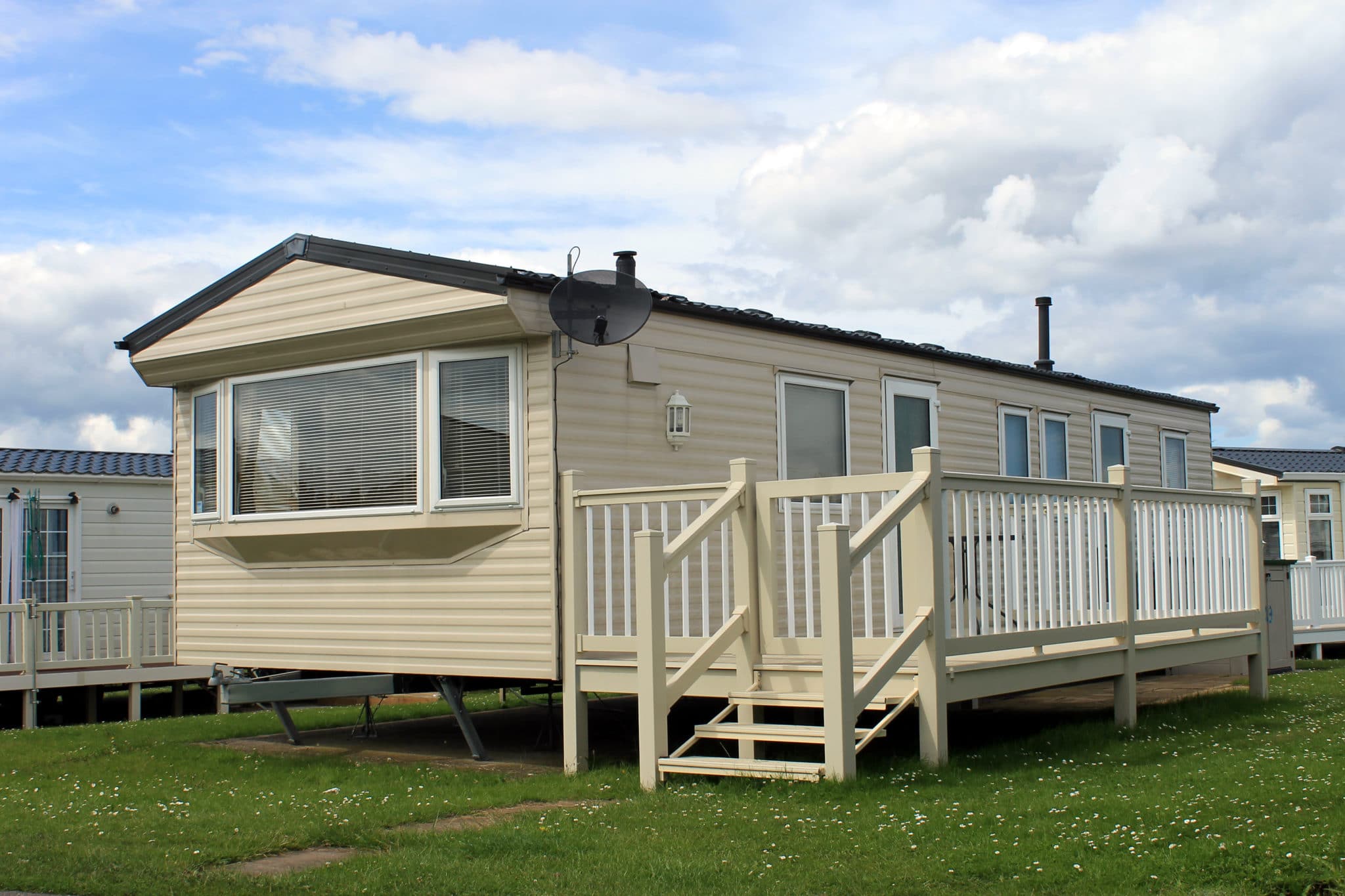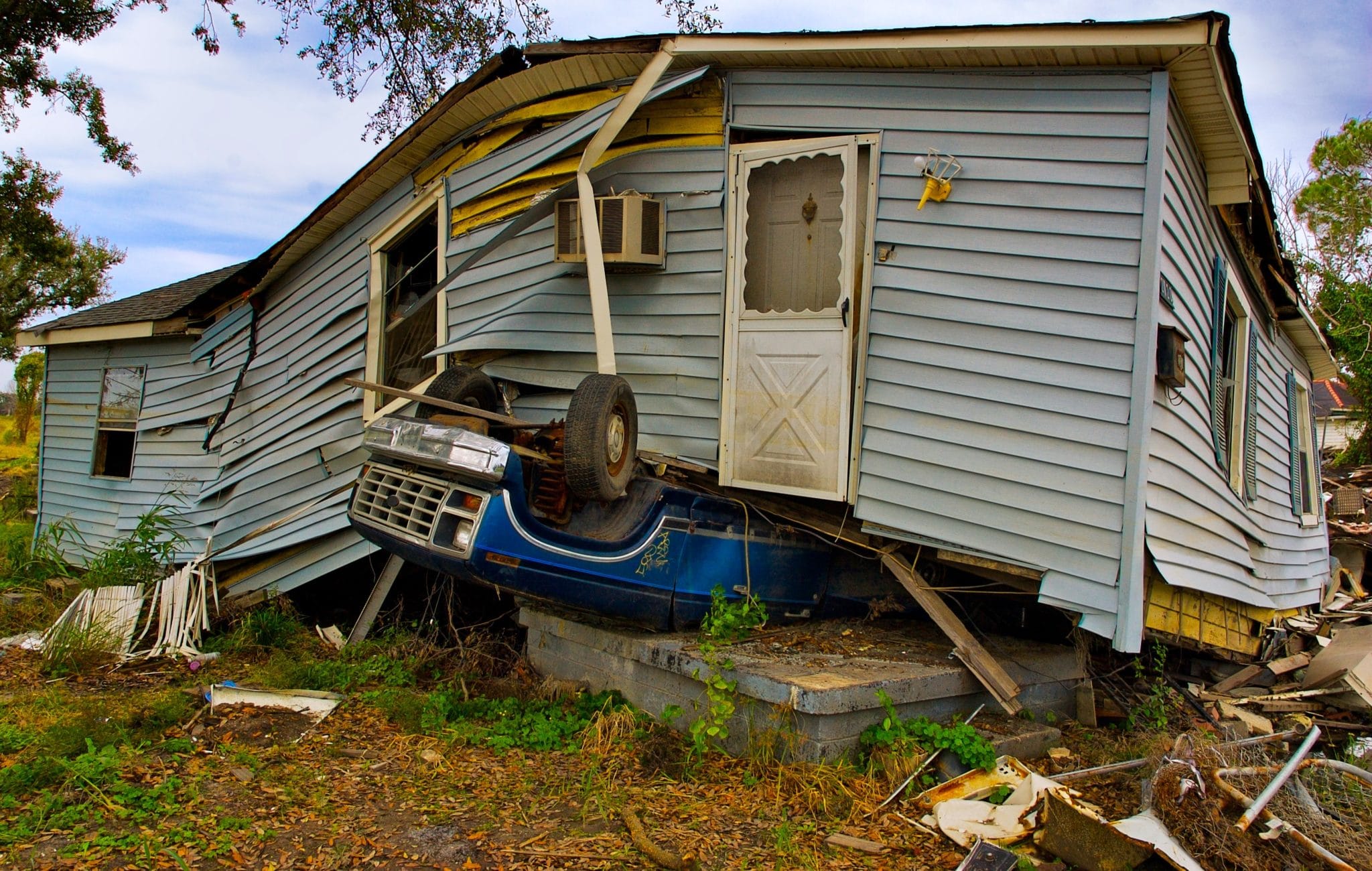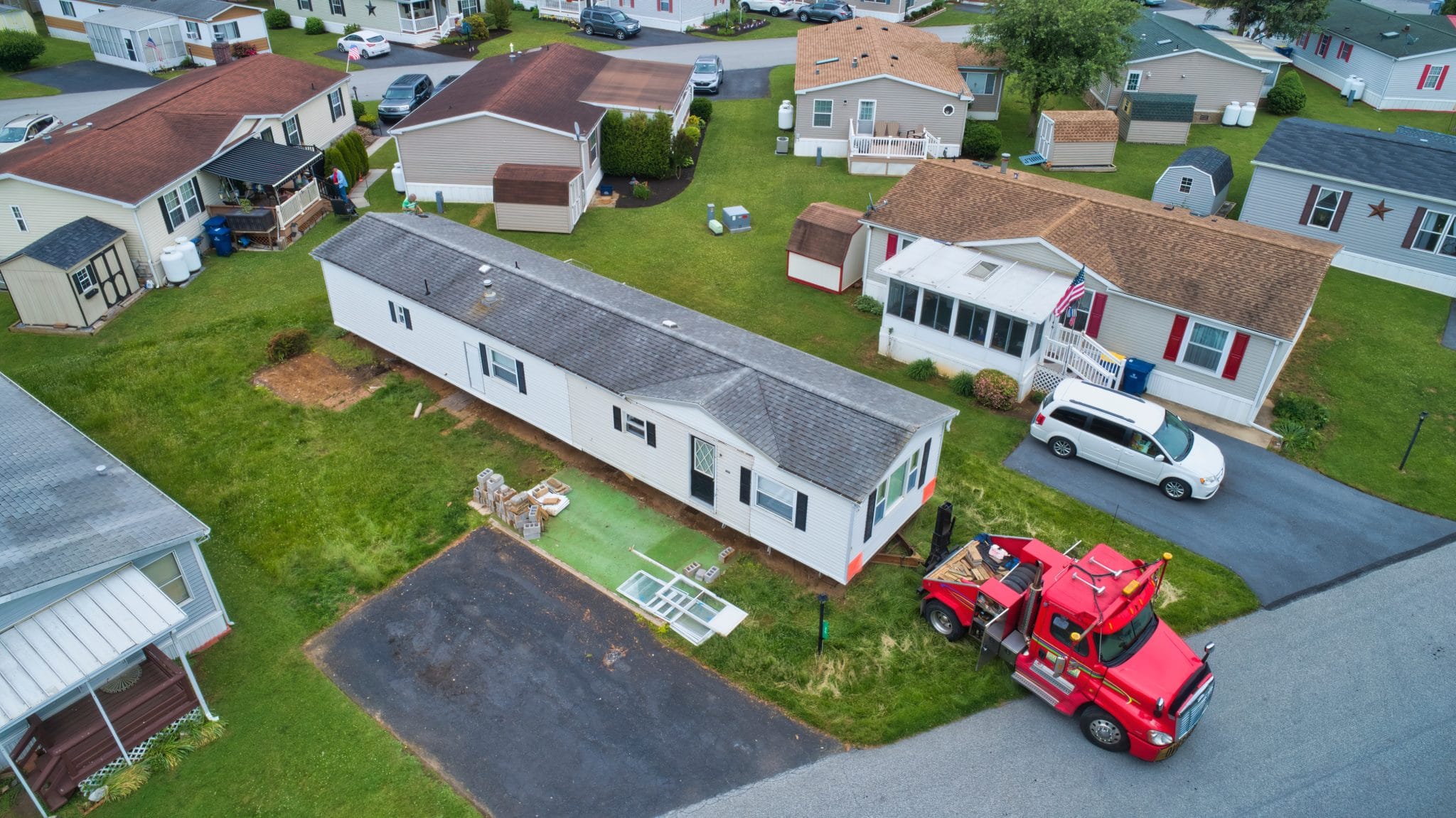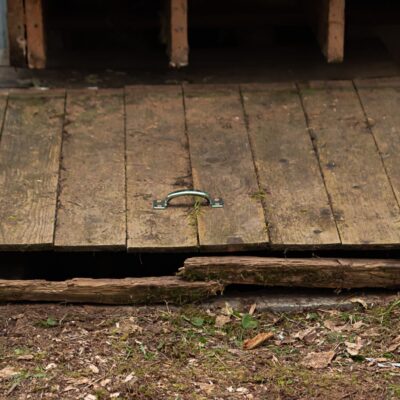Manufactured Homes: Home Inspecting a Prefab
Last Updated November 9, 2023

 Mobile homes (currently known as manufactured homes) are becoming a popular option for affordable homeownership, especially with the median price of a typical single-family home going up by about 20 percent this past year. As a home inspector, expect to see many more manufactured homes in your inspection career, regardless of whether you seek them or not.
Mobile homes (currently known as manufactured homes) are becoming a popular option for affordable homeownership, especially with the median price of a typical single-family home going up by about 20 percent this past year. As a home inspector, expect to see many more manufactured homes in your inspection career, regardless of whether you seek them or not.
If you are new to inspecting manufactured homes, you may wonder what surprises they bring. As the ancient Chinese general Sun Tzu said, “Know thy enemy and know yourself. In a hundred battles, you will never be defeated.”
You can save yourself from many potential claims by learning about the nuances and quirks of manufactured homes. On the other hand, if you neglect studying them, you may find yourself missing a serious issue—like the following inspector.
A Manufactured Home Claim
Recently, one of our insureds received a claim accusing them of misidentifying the pipes in their manufactured home. The inspector had incorrectly reported that the plumbing was a mix of copper and polyethylene (PEX), when much of it was actually polybutylene —a dysfunctional, cheap pipe used in many manufactured homes between 1976 and 1996. Upon reviewing his report and photos, the inspector realized that he had truly misidentified the pipes. He had overly relied on finding the tell-tale stamp of “PB” on the pipes and, when he hadn’t found it, he had incorrectly reported the plumbing as something else. Luckily, despite the client’s demand of $4,200 to re-pipe and repair the home, our claims team was able to work with the claimant to reduce the settlement down to just $1,500.
Despite this resolution, we need to ask the question: What more could the inspector learn that would have helped him to “never be defeated?” There are many things he could have known, including the prevalence of polybutylene piping in many older manufactured homes. In this article, we will explore some of the facts about manufactured homes and how to prevent the claims that may arise from them.
Manufactured Homes: What to Expect
Workers build manufactured homes completely in factories. Afterwards, they transport them to the homeowner’s property. That is why many people refer to them as prefabricated homes or “prefabs”. While there are other types of prefabricated homes (modular homes being a prime example), we will not be discussing them in this article as they have their own unique issues. Manufactured homes are not built to state codes but to federal code dictated by the U.S. Department of Housing and Urban Development (HUD).
While single-wide units are most common, some housing and construction companies may combine more than one manufactured home (often known as a double-wide or triple-wide home) to create a larger structure. Because builders create prefab homes in manufacturing plants with the goal of transporting them, such homes can be fairly sturdy. However, damage or stress can still occur during the move. Additionally, manufactured homes’ unique creation and transportation necessitate some changes with various systems and areas of the home to make them more mobile. We discuss some of these differences below.
Foundation
While a typical home sits on top of a concrete foundation, manufactured homes rest on top of permanent metal chassis or frames for transportation. Once it arrives at the site, builders place the prefab on top of piers, jacks, or other supporting materials. While the homes themselves may be subject to strict codes, the foundations may not match their level of quality. If contractors place piers poorly, or use material that is inadequate for the weight, issues may arise as time goes on. As such, Kenneth Rodriguez of Loyalty Home Inspections, LLC in Delaware checks manufactured homes’ foundations first.
“If [the home has] been on the lot for quite a while, [the foundation is] not something that anybody’s paid attention to,” Rodriguez said. “But whether it’s a year or 10 years on the lot, one of the first things I do is check underneath the mobile home to see if it’s level.”
Another common issue with prefab foundations is anchoring. Because these small homes aren’t attached to their foundation, manufactured homes should have tie-downs (sometimes called wind straps) that secure them to the ground in high winds. Whether they are over-the-top tie-downs or frame anchors, home inspectors should ensure that they are taut, not corroded or damaged.
“If you have a wet crawl space, that can create rust on the tie-down straps,” said Calvin Bolt of Calvin Bolt Inspections & Testing in Indiana. “I’ve seen some of those straps completely rusted in two along one whole side of the house and the house isn’t being held down anymore. Other times I see the straps are loose or they’re severely rusted and they haven’t broken yet.”
Always dedicate enough time to check the tie-downs as they are the primary means of defense against storms for unrooted manufactured homes.
Crawlspace
Usually, a simple skirt surrounds the small crawlspace underneath a manufactured home. This skirt may occasionally prevent entrance. On the other hand, many skirts are thin or rotted through, allowing the elements and pests to enter easily. Beside the danger of running into a pest while in a confined space, Rodriguez also warns that critters can nest in and cause damage to the bottom board (often called a belly wrap) that separates and insulates the bottom of a manufactured home.
“You have to worry about [pests] burrowing and nesting in there. That can break down the insulation, and it allows for moisture and direct contact with the wood framing,” Rodriguez said.
On a newer manufactured home, the belly wrap should be fairly seamless with no holes or rips—except for utilities, like plumbing and electrical. This presents two problems:
- It can obscure your view of the plumbing, not allowing you to see leaks and other issues that you want to report.
- If there are any holes from repairs, they may open the home up to damage from moisture and frozen pipes.
“The majority of the area under a mobile home is pre-wrapped in a waterproof membrane, [and] that prevents you from being able to inspect a majority of the plumbing, HVAC, duct work, [and] subfloor,” said Jon Hamilton of East Alabama Inspections. Hamilton’s workaround: gently nudging the membrane to check for resistance.
“If there’s a puddle of water that [the membrane is] holding, you’re going to feel the resistance from that when you go to lift it up.”
Double checking for leaks can save your clients (and you) from experiencing significant issues in the future.
Plumbing and Materials
As mentioned in the story at the beginning of this article, older mobile homes may contain lower quality building materials. Polybutylene pipes are a prime example of this.
“One of the unique aspects of a mobile home and particularly older mobile homes is that it’s one of the only places where you may run into polybutylene water supply lines,” said Tony Escamilla of Villa Home Inspections in California.
Plumbing is not the only area that can suffer from poor materials. Hamilton recommends studying the characteristics of mobile homes from different decades, which can help you identify possible issues.
“All the way up until the ’70s, mobile homes were made largely with fiberboard…[which] is easily flammable and has no insulation,” Hamilton said.
To find out when a specific manufactured home was built, look for the Data Plate, a paper label found near the kitchen sink, a cupboard, the electrical panel, or closet. It will have information about the manufacturer and the serial number, which will help your research when writing your report.
Major Systems
Because of the compact size of prefabs, many of the major systems, like the HVAC and the water heater, are inconspicuous. Shaun Pizani of the Louisiana Inspection Firm had a difficult time finding many of them on his first mobile home inspection.
“Sometimes that stuff’s hard to locate or easy to overlook. The first time I inspected a mobile home, I had to backtrack a little bit and think about it to figure out where the water heater was,” Pizani said. “The water heater and the HVAC are usually out of sight. They are usually behind a hidden wall panel.”
If you are having difficulty locating the major systems of the home, turn to the Data Plate for information. A quick internet search on your phone will then help you find their location.
Attic
Attics are traditionally a target rich area for home inspections, but manufactured homes do not have large attics. In many cases, the attic hatch is difficult to access. And even if you can find the hatch, the attic likely isn’t large enough space to move around in.
Despite these limitations, attics are still an important area to inspect. Because of the size of prefab attics in particular, they may suffer insulation issues that lead to freezing pipes.
If you are unable to check the attic, be sure to say so in your report. If you are only able to perform a limited inspection from the hatch, note that, too.
Roof
While you want to be as thorough as possible while inspecting a roof to avoid a claim, manufactured homes may not be safe to walk on.
“Newer models of mobile homes are being built with asphalt shingle roofs, so I’ll walk on those. Older model homes from the ’60s, ‘70s, and ‘80s still have the thin tin roofs, and those I would not recommend walking on,” Hamilton said. “I would recommend you use a drone, or you can always just ladder up to the eave and look at it from the ladder.”
If inspecting from the eaves, Yaakov Fisgus of Inspect It Rite in New Jersey recommends touching the roof with your hand to get a sense of the roof’s wear and durability.
“If it’s a metal roof or a flat roof, you can put your hand on it to see how it actually feels,” Fisgus said. “A metal roof will, over time, get very thin where you can almost put your hand through it.”
Whenever you decide not to walk on the roof, write your reasoning in the report. And, if you inspect from the vantage point of the eaves, note that in your report, as well.
Transportation Stress
While they design manufactured homes to be sturdy enough to survive a trip, cracks and fractures are still common.
“One thing to remember is that, at one point, the home was mobile. It was transferred from either a manufacturing facility or a different lot. Anything that’s on the road like that is not always like it’s supposed to be,” Pizani said.
Be sure to check stress points, like windows and doors, for cracks that may lead to future water damage. Double checking that the plumbing and other utilities connect properly will also add a lot to your inspection.
Managing Risk with Manufactured Homes
Hopefully this article has given you an overview of manufactured homes and the issues that inspectors face while inspecting them. However, there are many other ways to protect yourself from future claims and complaints. Below are some steps that we suggest.
Learn the nuances of a manufactured home.
If you want to avoid missing defects while inspecting a manufactured home, you cannot avoid the most important step: learning.
Attend a class, get certified, or shadow an inspector who is familiar with manufactured homes.
“Inspecting a single-family home is very different than inspecting a mobile home. So, if you have some training available that’s specifically for mobile homes, you should definitely take it,” Escamilla said.
Even if you are not actively soliciting manufactured home inspections, prepare by learning now.
“A lot of times, [clients who schedule] will [not] even tell me that it’s either a manufactured or mobile home. It’s something that I end up finding out during the inspection,” Fisgus said.
Because many families are seeking affordable homeownership, you may expect manufactured homes to be on your schedule more often. It’s better to prepare now rather than perform a subpar inspection when you arrive to a manufactured home.
Be thorough.
 Because the square footage may be smaller than other homes, you might feel confident rushing the inspection. Don’t. As many inspectors know, even a small home can be rich in deficiencies. In fact, Fisgus recommends
Because the square footage may be smaller than other homes, you might feel confident rushing the inspection. Don’t. As many inspectors know, even a small home can be rich in deficiencies. In fact, Fisgus recommends
expecting certain areas of a manufactured home, like the foundations, to take longer than comparable areas of a standard residential home.
The more thoroughly you inspect, the less likely you’ll hear back from an unhappy client.
Report inaccessible or concealed areas.
How you report unseen areas of a home can prevent client complaints. Whether it’s an inaccessible attic or hidden plumbing in the belly wrap, always report obstacles during your inspection.
“If it’s not readily visible, take a picture and document why,” Hamilton said.
Taking photos of inaccessible areas can deter false accusations and resolve claims. In your report, write why you were unable to inspect a specific area and attach a photo as evidence. Furthermore, if you are talking to the client onsite, discuss the areas you were unable to properly inspect.
Protect yourself better.
Manufactured home inspections can be tricky. But, with the right precautions, you can mitigate your risk and help your clients make informed purchases.
As insurance providers, we recommend that inspectors carry errors and omissions (E&O) and general liability (GL) insurance. These insurance types protect you from claims, meritless or not.
Today, InspectorPro Insurance is the leading home inspection insurance provider in the nation. With a reputation built on superior claims handling and quality customer service, we give clients peace of mind.
We build our errors and omissions and general liability insurance policies to serve your unique business needs. Insuring with anyone else simply isn’t worth the risk.
Apply for a quote for our insurance program here.







